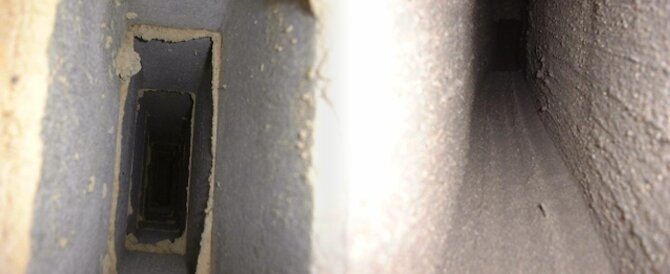Chimney lining installation
Lining a chimney is quick and hassle-free with Landy Vent. Because Eldfast chimney lining is drawn through the flue using a plug, we won’t need to remove any brickwork.
The installation process happens in three stages:
Chimney inspection and preparation
Before lining a chimney, we carry out a pre-installation survey to ensure the flue is structurally sound and suitable for lining. A flue smoke test will highlight any defects. We also make sure Eldfast is suitable for the intended appliance. Not sure what’s wrong with your flue? We can also carry out CCTV surveys and air pressure testing to diagnose the problem.
Flue cleaning
Before the flue can be lined, it must be cleaned. All loose material is removed using steel brushes. Any stubborn deposits are removed with reaming tools or flails.
Lining your chimney
The lining is applied by inserting a plug at the base of the flue opening, and pulling it slowly through the chimney. Eldfast is poured onto the top of the plug and continually refreshed as the plug moves through the flue. The plug can be pulled through more than once if necessary to ensure a complete lining.
The plug itself can either be a series of foam pads encased in a kevlar jacket, or a 3ft balloon attached to a self-regulating compressor (this method is ideal for flues with a varying diameter or limited access). Both methods use pressure to apply the Eldfast material to the face of the flue.
Once the installation is completed, the surface will usually be slightly granular and may be slightly ridged in appearance. The chimney lining will gradually harden. If the air temperature is warm and there is a steady updraught through the flue (with wood stoves, the doors should be left open), the chimney lining should be dry within 2 days. A small electric fan heater can be used to assist the process if necessary.
The chimney lining will be checked and certified. A notice plate will be issued explaining the suitability of the flue. This should be attached to the base of the flue or nearby.
